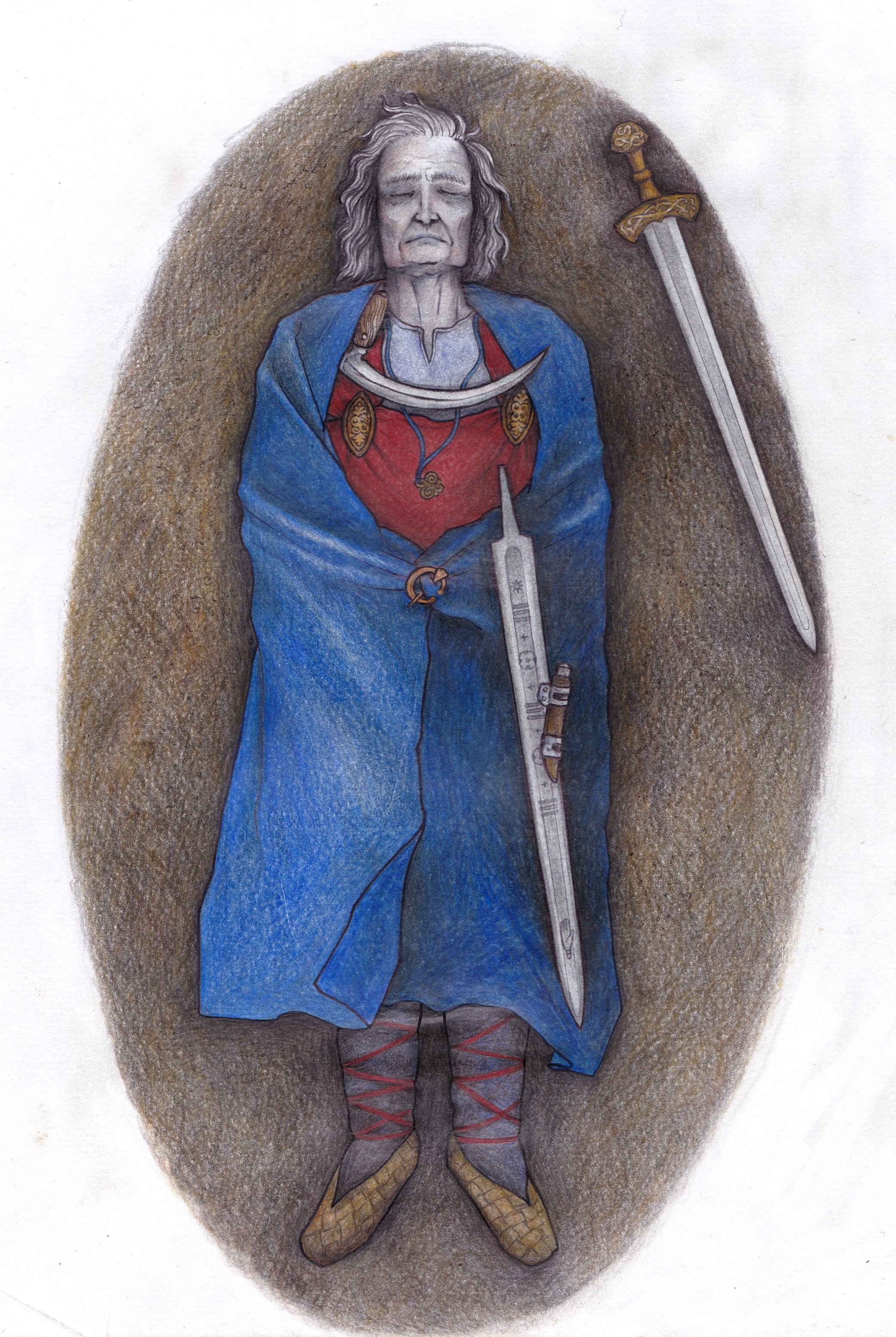
The remains in an ancient warrior’s grave from Iron Age grave in Finland have puzzled archaeologists for decades. Some have hypothesized that medieval Finland had a class of female warriors, or that this was a shared grave for both a man and a woman.
Now, new testing seems to show that the grave, dating to 1050 to 1300 A.D., belonged to nonbinary person with an extra X chromosome, reports the Guardian.
The deceased was buried with weapons traditionally wielded by men as well as with women’s jewelry, leading to speculation that this was the final resting place of a rare female warrior. But geneticist Elina Salmela of the University of Helsinki conducted DNA testing on a limited sample from the grave and determined with 99.75 percent certainty that the buried individual had sex-chromosomal aneuploidy XXY, known as the Klinefelter syndrome, according to a new paper published in the European Journal of Archaeology.
“The team had a minuscule amount of data to work with, but convincingly show that the individual likely had an XXY karyotype,” Pete Heintzman, a professor at the Arctic University of Norway and an expert in ancient DNA analysis, told Live Science.
This sword was found in the grave of what is now thought to have been a nonbinary person from Medieval Finland. Photo courtesy of the Finnish Heritage Agency.
Discovered in 1968 at Suontaka Vesitorninmäki in Hattula, in southern Finland, the grave’s contents presented a mystery to archaeologists. The oval brooches and fragments of woolen garments are typical of women’s dress from the era, but the deceased was also buried with a sword at their side, as well as another sword that was buried above them at a later date—suggesting prolonged mourning for their death.
People with Klinefelter syndrome are typically anatomically male, but may have enlarged breasts and less body hair. Most are infertile. The paper’s lead author, Ulla Moilanen, an archaeologist from Finland’s University of Turku, believes that the grave belonged to a nonbinary person who didn’t identify exclusively as female or male.
The many valuable objects buried with the person suggest that the deceased was a figure of importance. “The buried individual seems to have been a highly respected member of their community,” Moilanen said in a statement. “They were laid in the grave on a soft feather blanket with valuable furs and objects.”
Objects buried in the grave of what is now thought to have been a nonbinary person from Medieval Finland. Photo courtesy of the Finnish Heritage Agency.
“It has been suggested that in the ultra-masculine environment of early medieval Scandinavia, men with feminine social roles and men dressing in feminine clothes were disrespected and considered shameful,” the paper noted. “These new research results indicate that even in early medieval Finland, which is often considered a masculine and warlike society, there may have been individuals who did not fit into a binary gender model.”